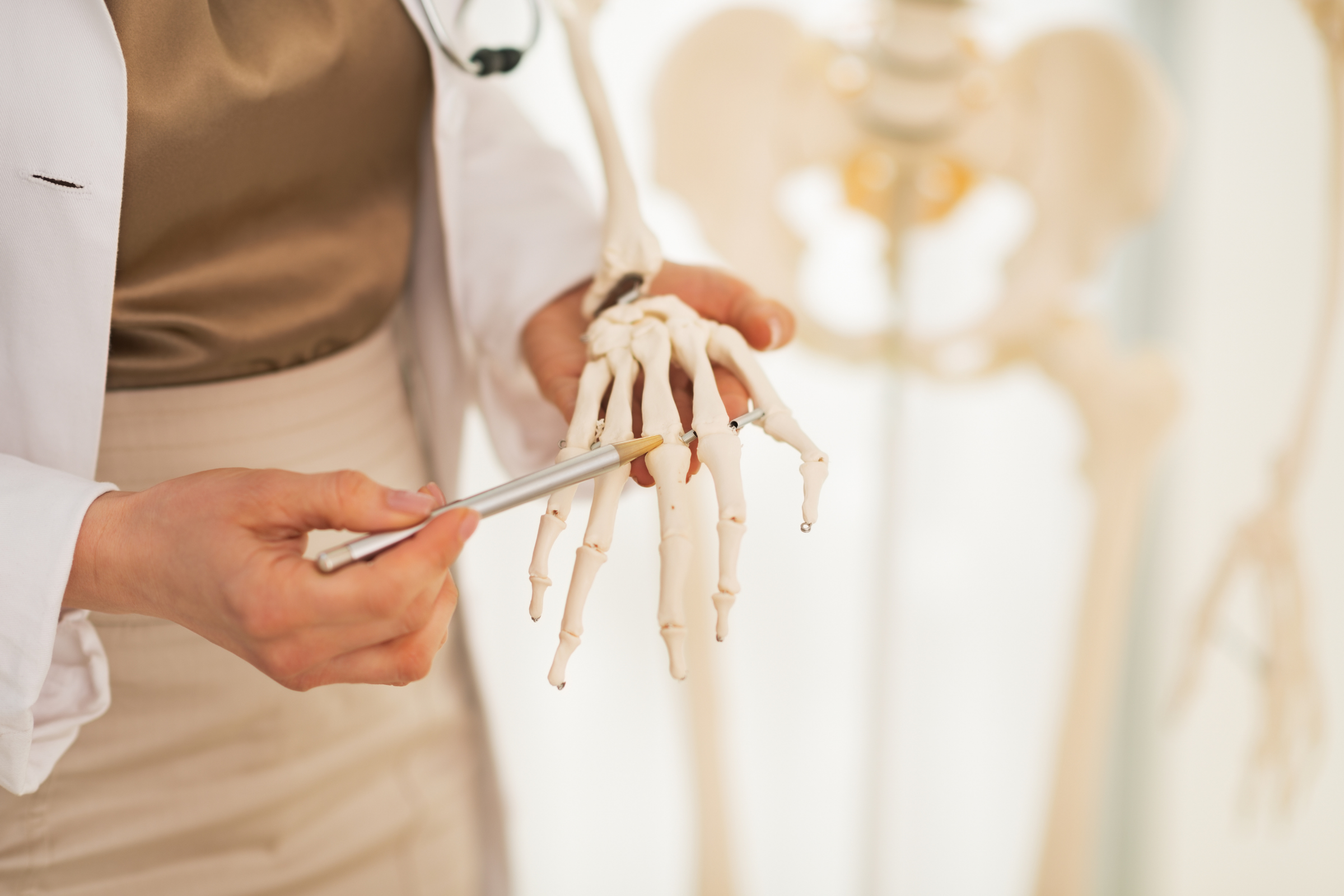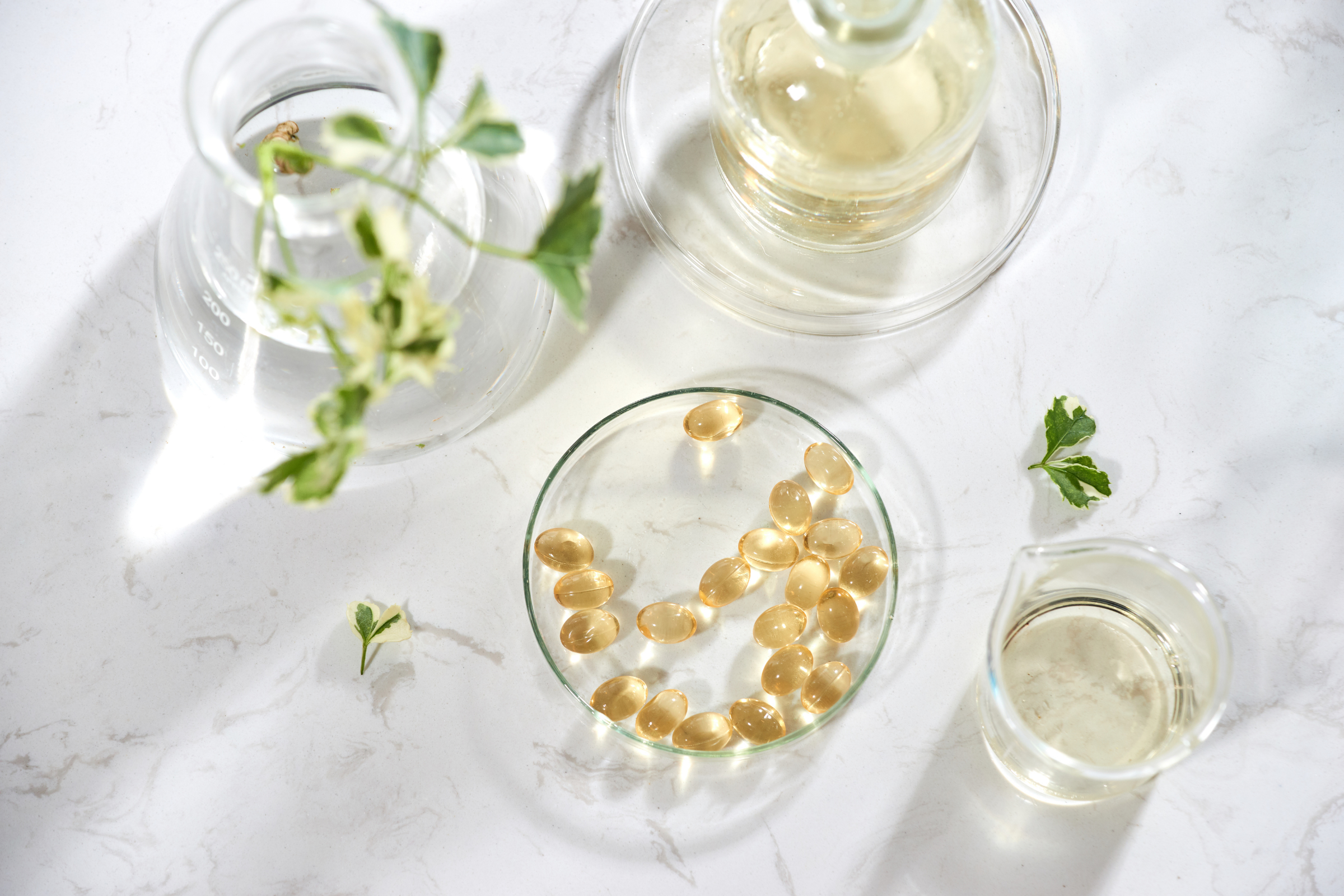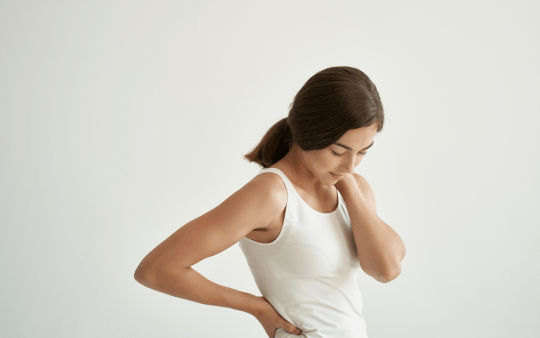You cannot feel your bones weaken. This process, known as osteoporosis, rarely has symptoms. Breaking a bone is often the first clue that your bones are not happy. Reversing osteoporosis involves a slow treatment plan, and is largely unsuccessful when relying solely on pharmaceutical interventions. This may be because while your medical doctor has your best interests in mind, they may not necessarily be well-versed on the appropriate natural approaches to rebuilding your bone structure.
Osteoporosis is a bone disease in which bones gradually become more porous and, as a result, weaker and more challenging to mend when injured, so that even minor falls can become a challenge to heal. Sometimes, in advanced cases, even a simple sneeze can crack a rib! The US Surgeon General reports that nearly half of all women older than fifty will break a bone because of osteoporosis, and an estimated one in four men will as well. In fact, men over fifty are more likely to have osteoporosis than to be diagnosed with prostate cancer. The consequences of poor bone health can lead to severe or crippling pain from fractures that do not heal, and pain that will not go away.
Furthermore, 25% of seniors who break a hip will die within one year from the problems related to the injury or from the surgery needed to repair it. Those who survive often require long-term rehabilitative care. Osteopenia is a milder form of osteoporosis that almost always progresses if not treated correctly.
Bone health and osteoporosis
Our bones are continuously changing throughout our lifetime. New bone is made, and old bone is broken down in a process called remodelling, or bone turnover. In young individuals, the body makes new bone faster than it breaks down old bone, and bone mass increases (peaking in the early thirties). After that, bone remodelling continues, but slightly more bone is lost than is gained.
The risk of developing osteoporosis depends on how much bone mass was attained between ages twenty-five and thirty-five (peak bone mass) and then on how rapidly the individual loses it later. The higher the peak bone mass, the more bone the individual has, and the less likely they are to develop significant bone loss. Bone strength also depends on its size and density. Women experience osteoporosis more than men because they naturally have thinner and smaller bones. Taking certain medications may also block the ability to absorb nutrients, like anti-acid medication and other pharmaceuticals, including steroids, and sets the stage for developing osteoporosis. Many metabolic and hormonal diseases may also have accelerated bone loss. Estrogen plays a protective role in bone health, and within the first few years after menopause, bone turnover is accelerated. More than one factor is likely a contributor as osteoporosis is a disease that is formed over decades - it does not happen overnight.
Osteopenia vs. Osteoporosis
There is a simple and easy bone mineral density test your doctor can order. It takes about fifteen minutes, and is painless with zero preparation beforehand. This test is a dual-energy X-ray absorptiometry or DEXA scan, and is considered the gold standard in diagnosing osteopenia/osteoporosis. The test can be repeated no earlier than every two years, as bone changes gradually. A urine test, called a n-telopeptide test, can be used to assess bone progression in the interim and ought to be repeated every four to six months. Insurance covers this test, and it should be used routinely for monitoring. Most DEXA testing is not suggested until advanced adulthood or sooner with certain risk factors only. Thus, most people may be oblivious to their bone health until it’s almost too late. Unfortunately, modern medicine does not focus on preventative medicine, thus, a discussion on proper bone health is often not a consideration at the doctor’s appointment for patients other than seventy-year-olds.

After a diagnosis of osteopenia, the doctor may suggest medication and supplements. With an osteoporosis diagnosis, pharmaceutical intervention is implemented. There are a few oral and injectable types available, but none of them are suggested for long-term usage. These pharmaceuticals will not give your bones the ingredients they need to heal and strengthen, and may also cause severe adverse reactions. Osteoporosis can be reversed but not by taking medication alone.
Treating Osteoporosis Naturally
We must stop the madness! Osteoporosis does not have to occur, and can be treated naturally and effectively. Listening to your medical doctor alone may not be enough for your optimal health. Consulting with a naturopathic doctor will ensure a natural treatment plan for the bones. These doctors conduct a holistic assessment of your health and are experts on using nutrition to optimize your bone and overall health. They can order the DEXA tests and other testing to see how you are progressing. If you must go at this alone, here is a natural game plan for better bone health:
Healthy Food Choices
Let’s go over some basics: the earlier you think about your bone health, the better. Thank your momma if she stressed eating real and healthy food when you were a kid and beyond (she is smarter than your average family doctor!). It is not too late to teach your children about healthy food choices, and it’s especially important to do so before they go off to college. Remember: maximum bone density is achieved by age twenty-five to thirty-five, after which the bones spend the remainder of their life trying to stay strong. If bones are already at a loss by age twenty-five, then climbing out of the bone hole is really difficult to do. Pay attention to excessive caffeine and soda consumption, which can leach calcium from bones. And ensure you get adequate protein, which is vital for the matrix of bone structure.
What Vitamins are Good for Osteoporosis?
A decent multivitamin is always a win at the game of health. Consider including a good quality multi-vitamin in addition to omega-3 only fish oil in your diet. Be sure to follow the label for dosages and aim to be consistent with taking your vitamins. Quality does count when it comes to purchasing supplements - but not all good supplements have to be expensive.
Persistence and determination are the keys to climbing out of the bone hole. Bones do need lots of minerals, and they may have been robbed of them for years by medications. Ideally, get off these medications if you can. Acid-blocking medications like Nexium or Prilosec block your ability to absorb nutrients, and thus, your body pulls them from the bones. Osteoporosis cannot be reversed if acid-blocking medication is continued to be consumed habitually. Therefore, consider consulting with a naturopath to figure out natural alternatives.
Bone Health and Calcium
Bones will never strengthen without the proper ratio of nutrients. Many patients are aware they need calcium, and their doctor may suggest a calcium supplement. However, the suggestion is usually flimsy and without much consideration. “Just get anything” is often the wisdom dispensed, and so patients typically find the cheapest tablets they can at Wal-Mart or on Amazon. Or even worse, a patient may already be taking a decent calcium supplement and their doctor tells them to stop based on some silly reason that has nothing to do with the calcium supplement. Some healthcare providers may erroneously believe a patient can get all their calcium needs (or, for that matter, all nutrient needs) from their food choices alone, and then never ask if they eat calcium-rich foods. This is not helpful, and as a result, bones don’t get better and then a patient’s only resort is pharmaceutical treatment.
Calcium-rich foods are readily available, but if you’re not eating them, deficiencies will occur. Dairy foods like milk, cheese and yogurt are high in calcium, but if you’re on a dairy-free diet, then calcium must be obtained from other foods such as green, leafy veggies and nuts. It’s often difficult to eat enough of these foods to meet the basic calcium demands their body requires. Some great non-dairy sources of calcium include figs, almond butter, tahini (ground sesame seeds), fortified cereals, sardines and steamed spinach. Leafy greens also have vitamin K - another vital vitamin the bones need. Soy is high in calcium but can be controversial due to the various myths and misconceptions around its consumption. In the menopausal years, soy can not only provide calcium but also phytoestrogens to strengthen bone. However, picky eaters and those with food allergies also face bigger hurdles to meet minimum calcium (and other nutrient) requirements, and mineral/vitamin supplements may be mandatory.
Calcium Supplements
Calcium comes in various forms, but it is essential to realize that not all calcium supplements are created equal. Chose a calcium supplement that is not in tablet form. In addition to capsules, there are many tasty liquid and powdered products. According to research, one of the most well-absorbed vegetarian forms of calcium is calcium citrate-malate. Microcrystalline hydroxyapatite complex (MCHC) may be the most beneficial form of calcium since it offers more than just calcium; it provides several bone-enhancing growth factors and other micronutrients. The minimum daily intake of calcium for adults is 1200 to 1500 mg per day, and the body can only absorb about 500 mg at one time. Excessive calcium intake in a milieu devoid of other minerals and proper hydration can lead to kidney stone formation.
Essential Minerals for Bone Health

Magnesium
Magnesium is almost as essential as calcium for bone health. However, it is very challenging to get from foods alone, and a supplement should be considered. Do not choose an oxide form of magnesium and aim to take this mineral and others at bedtime. Our bodies heal at night, and minerals are relaxing to both mind and muscles.
Potassium
Potassium is an acid-alkaline balancer of the body and keeps calcium in place. Potassium is found in lots of produce, particularly sweet potatoes, potatoes, leafy greens and lima beans. A high-sodium diet may need even more potassium to keep the right balance.
Zinc
Zinc is an essential mineral that has a stimulatory effect on bone formation and mineralization. Take zinc daily to maintain a steady amount because the body has no specialized storage system. Animal protein suits most bare minimum levels of zinc, and oysters have a fantastic amount. Nuts and beans are fine vegetarian sources as well. If taking as a supplement, be sure to balance with additional copper.
Trace Minerals
Trace minerals such as boron, manganese and silica are essential for bone health. One study found that boron supplements reduced daily urinary calcium excretion by 44%. Prunes and avocados are great sources of boron. Manganese is stored in the bones and supports bone density. Mussels are packed with manganese, as is other seafood. Lastly, silica (as silicon dioxide) assists with strengthening the bones, and may also help them be more flexible. Whole grains, green beans and bananas are good sources of silica, as is beer.
What Vitamins are Good for Osteoporosis?
We need more than just minerals for bones: we need more vitamins too. Taking more vitamin C, the awesome antioxidant, can also enhance mineral absorption. But without adequate amounts of vitamin D, those minerals don’t make it into the bones. The best assessment of vitamin D is via a urine test. In the meantime, assume there is a deficiency and aim to take at least 1,000 iu of cholecalciferol (vitamin D3) per day with a meal that has fat. Vitamin D is found in some food sources such as fish, eggs, fortified milk & cereals, and cod liver oil. The sun is also a significant contributor to our daily production of vitamin D, and as little as ten minutes of exposure is thought to be enough to prevent deficiencies. For darker skin types, more sun exposure will be necessary to absorb sufficient Vitamin D.
Vitamin K for Bone Health
Vitamin K is so important for bone health and vitamin D absorption. There are many pharmaceuticals that limit the intake of vitamin K foods and thus it must be surmised that the bones (and other systems too) will suffer when taking these medications. Our leafy green veggies are full of vitamin K, as are broccoli, peas, peppers and other organic leafy greens.
Treatment for Osteopenia
Exercise is important! Weight-bearing aerobic activities, involving the bones supporting body weight, have been shown to have a positive effect in maintaining and increasing bone mass and preventing osteopenia and osteoporosis. These activities include yoga, weight-lifting, jogging, hiking, stair-climbing, dancing and other activities that require muscles to work against gravity. Swimming and simply walking are great exercises to improve cardiovascular fitness, but not for building bone. Individuals who live a sedentary lifestyle have weaker bones and are at higher risk of sustaining fractures. Overall, most individuals should aim to exercise for thirty to forty minutes three to four times each week, with some weight-bearing and resistance exercises in the program. In addition to oodles of exercise possibilities involving gyms, personal trainers, online and in-person classes, and videos and programs at recreation centers, every seniors’ center in America offers some of these options that work well for older folks.
There we have it! A natural treatment plan for restoring and preserving bone health.









